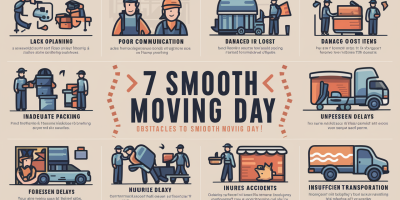For the Department of Transportation (DOT) to govern a workplace safely and compliantly, the Return to Duty procedure is essential. Employers and employees alike must comprehend this procedure. To guarantee that those who have broken drug and alcohol laws can safely resume their jobs, several procedures must be taken. Being aware of the main components of this procedure aids in maintaining a drug-free and secure workplace. Here are five key points about the Return to Duty procedure to be aware of.
Recognizing the Goal:
The purpose of the Return to Duty process is to make sure that workers who have broken drug and alcohol laws receive the necessary rehabilitation before returning to jobs that need their safety. Substance abuse professional (SAP) evaluations, education or treatment programs, and follow-up testing are some of the steps in this process. These procedures are designed to confirm that the worker is dedicated to being sober and has stopped using illegal substances. Employers who follow this procedure lower the risk of incidents and accidents linked to substance usage, thereby safeguarding the safety of both their personnel and the broader public.
Subsequent DOT Drug Testing:
An employee is required to submit to a series of follow-up drug tests after being cleared to resume work after breaking drug and alcohol policies. At least six follow-up tests must be performed during the first 12 months following their Return, according to Department of Transportation regulations. The precise number of tests, however, may differ according to the advice of a substance abuse professional (SAP), who evaluates every situation differently. The purpose of the randomly scheduled tests is to make sure the worker doesn’t use drugs. Depending on SAP guidelines, follow-up testing can continue for a maximum of five years and can occur more frequently than once a year.
Do Subsequent Tests Take the Place of Random Drug Testing?
Random drug testing is still necessary, and follow-up testing is an extra necessity. Workers who are allowed to return to work are required to take part in random and follow-up testing programs. In order to prevent substance usage, random tests are a crucial component of upholding a drug-free workplace. They are meant to be unexpected. The dual strategy guarantees that workers always adhere to safety regulations. Random testing is conducted on all personnel who hold positions where safety is a concern, whereas follow-up tests concentrate on individuals who have previously broken the law.
DOT Recordkeeping Requirements for Return to Duty:
In order to comply with DOT standards, employers must keep thorough records of the Return to Duty procedure. Documentation of the initial infraction, advice from the substance abuse professional, evidence of finishing any necessary education or treatment programs, and the outcomes of all follow-up tests must all be included in these records. Confidentiality must be preserved, and these documents need to be kept in a safe place. In order to guarantee that these records are accessible for any required audits or reviews, employers are required to hold onto them for a minimum of five years. Maintaining accurate records supports the employer’s commitment to upholding a safe and legal workplace by serving as an audit trail and assisting in the verification that all regulatory obligations have been fulfilled.
Observation and Succession:
Ongoing monitoring is crucial after an employee passes the initial Return to duty and follow-up exams. If the substance abuse professional recommends it, this can involve more surprise testing. Constant observation makes it possible to see possible drug use relapses early and take swift action. It may also be possible to perform routine evaluations of the worker’s development and compliance with safety regulations, modifying the testing program as needed. This continuous supervision guarantees that the worker upholds the company’s commitment to a drug-free environment, improving general dependability and safety.
Conclusion:
You contribute to keeping a drug-free atmosphere and safeguard everyone involved by taking the necessary actions. The procedure entails assessments, retests, and continuous observation to verify that staff members continue to abstain from drugs. It is imperative to comply with DOT standards and maintain proper records. Do not forget that follow-up tests are an addition to random drug testing. Maintaining awareness of these crucial factors guarantees that you adhere to the strictest safety regulations. The public and your staff both gain from your dedication to this process.













Comments